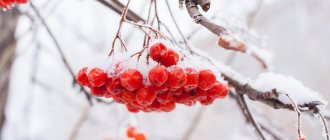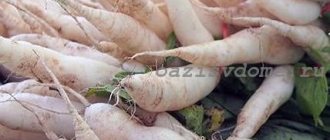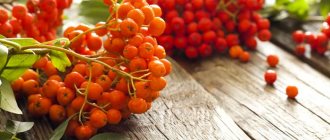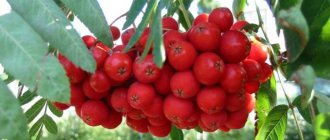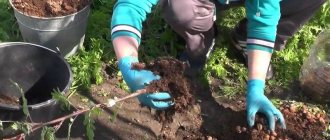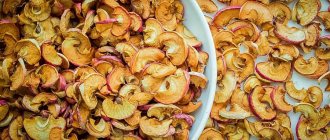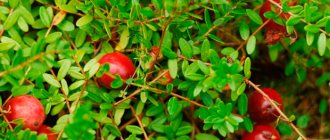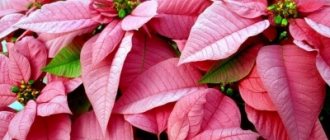The plant, hung with clusters of red berries in autumn, has been known since ancient times. People are familiar with the amazing healing power of this plant. It has always been used in the preparation of various drinks and dishes, as well as many medicinal products.
In order to take advantage of the magnificent healing properties of this wonderful plant, you must first collect the berries, and for this you should know the harvest time of red rowan. Information about this is presented in the article.
Rowan forest
In autumn, gardens and forests are covered with colorful leaves of a wide variety of bushes and trees. And against this background, orange and red bunches of rowan stand out as a bright spot. Often, especially in fruitful years, the branches of bushes bend under the weight of these fruits. During the migration period, red-breasted bullfinches sit on them, which, like hazel grouse, sparrows, waxwings and bee-eaters, like to eat ripe berries. However, such beauty does not happen every year - as a rule, after a fruitful year comes a low-yield year.
There are about a hundred species of rowan in total, but the most common is the common one, which grows in abundance in forests.
Before answering the question of when red rowan is collected, let’s find out where it grows and provide a description.
Features of the rowan tree
Common rowan is a shrub or tree whose height does not exceed 12 meters. The shape of the crown is round, there is pubescence on the surface of the red-gray stems. In mature trees, the bark is smooth and glossy, it has a brown-gray or gray-yellow color. The odd-pinnate, alternately arranged leaf plates are about 20 centimeters long, they consist of 7 to 15 pointed elongated leaves with a jagged edge, their front surface is matte, green, and the back surface is painted in a lighter shade and has pubescence. In autumn, the foliage changes its color to red and golden shades.
The terminal lush corymbose inflorescences have a diameter of about 10 centimeters, they consist of a large number of white flowers that have an unpleasant aroma. The fruit is a juicy apple of red-orange color, the diameter of which reaches 10 mm. This tree blooms in May–June. The berries fully ripen in the last weeks of summer or the first weeks of autumn.
When planting, it should be taken into account that such a crop reacts extremely negatively to smoke and air pollution, as well as to swampiness and stagnation of water in the soil.
The wood of the mountain ash tree is distinguished by its elasticity and hardness; it is very easy to process. In ancient times it was used to make runes and spindles. The berries of this crop are used to make fabric dyes.
Spreading
Red rowan is found everywhere in the temperate climate zone of the earth. It grows especially in large quantities throughout Europe (from the Kola coast to the Mediterranean, from the Urals to Scandinavia), in the Caucasus and Central Asia.
As an introduced plant, it can also be found in areas with a temperate climate (in North America, even in the Far North). This is due to the fact that mountain ash has the ability to survive even at the lowest temperatures (down to 50 ° C). The plant bears fruit best in the western part of the forest zone (in comparison with the eastern) of the European Plain, as well as in the taiga (in comparison with mixed-deciduous forests).
What to cook from rowan
Infusion of red rowan berries : pour 1 teaspoon of fruit with 1 glass of boiling water, leave until cool. Drink 0.5 cups 1-3 times a day as a valuable multivitamin for allergic and other skin diseases.
In folk medicine, juice from fresh red rowan berries is recommended for low acidity of gastric juice; take 1 teaspoon before meals. Also, fresh rowan juice is an effective remedy for hemorrhoids. You need to squeeze the juice out of the rowan fruits and drink 1/4 cup, 3 times a day, with water.
Rowan tincture . Take a glass jar and fill it more than half the volume with rowan fruits. Then fill the entire container to the top with vodka and seal it. Place in a dark, cool place for 10-14 days, the tincture should turn dark brown and acquire a specific forest smell. The tincture is strained and stored in a cool, dark place. Take it one tbsp. spoon diluted in water at least 3 times a day.
Rowan berry juice is also very healthy. To do this, take 40 g of berries, grind them in a mortar, pour a glass of boiling water and leave for 4 hours. Then shake the contents well and filter through three-layer gauze. Add more sugar to the filtered infusion to taste.
Red rowan syrup can be easily prepared at home. Another recipe is used: rowan berries are crushed in a mortar and poured with boiling water in a ratio of 1:2, left for 4 hours, filtered and diluted with sugar syrup.
Rowan berry pastille is very tasty . The slightly bitter taste gives the delicacy a piquant flavor. For every kilogram of ripe rowan berries you need to take 2 kg of granulated sugar. Boil rowan until soft, grind and mix with sugar. Place the mixture on a baking sheet lined with paper or foil and dry in the oven at low (up to 75°C) temperature. Cut the finished marshmallow into diamonds and cubes with a sharp knife, cover with a layer of powdered sugar and place in boxes or jars with tight-fitting lids.
Candied rowan berries are even tastier than . To prepare it, ripe bunches need to be disassembled into small branches, washed and dried. Prepare sugar syrup as for candied fruits. Pour boiling syrup over rowan berry clusters and let them cool. Then remove the berries, bring the syrup to a boil again and pour it over the rowan again. The procedure is repeated 5-6 times until the berries darken and are saturated with syrup. After this, they need to be dried and sprinkled generously with powdered sugar. Can be stored in plastic boxes or any glass container. Anyway, this delicacy doesn’t last long - it’s too tasty.
We recommend reading: If You Put Vinegar Into Canned Vegetables
Ripening time and storage
In order to find out the time of harvest, you should know the time of its ripening. To collect fruits, you must not miss the period when the berries turn red and fill with juice.
People even have a holiday (September 23) - Rowan Name Day, when the very period of berry picking begins. At this point, the fruits are filled with juice and fully ripened, and it is believed that it is possible to harvest red rowan for storing fresh at home.
Bunches of berries are hung in the cellar and stored in barrels of water. This way they are stored until spring.
When does the berry ripen?
Ripe rowan can be distinguished by a number of characteristics:
- completely colored red or black;
- becomes dense and elastic, but not hard.
Fruits after the first frost
Rowan berries can have two ripening periods:
- 1. The fruits are already ripe, but retain a bitter taste.
- 2. After the first frost. Cold air removes the astringency and the berries become sweet.
But you shouldn’t delay collecting after the cold snap. The product itself ripens and remains on the trees for a long time. But it can quickly deteriorate under the influence of winter changes in temperature and humidity.
Since mountain ash is distributed throughout the country, the time of its collection depends on the region.
In Siberia and the Urals they begin collecting in November. In the center of the country - in October. And in the south you can start preparing the harvest at the end of September.
Rowan berries are usually collected in clusters.
Don’t bother yourself and pick each berry separately. Using special scissors, you need to cut off the inflorescence with fruits and put it in a container. Aluminum and galvanized containers are not recommended. This may negatively affect the taste of the crop. The harvested crop should be washed, dried and used for its intended purpose.
Description of the plant
Red rowan is a shrub or tree and the same name for the berries of one of the varieties of rowan.
Its spherical fruits are small in size (up to 1 cm in diameter). They are covered with orange-red skin. Inside there is juicy pulp with small, round-shaped seeds.
Due to the presence of bitterness in the berries, they are practically not eaten fresh. But, thanks to their rich composition, they are the most valuable raw materials for the medical and food industries. Rowan is used for the production of various drinks (non-alcoholic and alcoholic), jam, preserves, jams, marmalade, candies, etc. are prepared using it.
Beneficial properties of rowan
How is rowan useful, what medicinal properties of rowan can be used by people. So, the benefit of rowan lies in the unique composition of its berries. Rowan contains a whole complex of vitamins and minerals that the body needs. Ripe red rowan berries contain organic acids (malic, sorbic, citric, succinic, tartaric), tannins and pectin, amino acids, essential oils, a lot of potassium, magnesium, phosphorus, iron and other trace elements. Vitamin A, vitamin PP, vitamins B1, B2 and C, as well as vitamins P, K, E. There is more provitamin A in ripe rowan berries than in carrots, and vitamin C - than in lemons. The presence of vitamin P puts rowan in one of the first places among other fruit plants - it strengthens the nervous system, eliminates irritability, insomnia and general weakness of the body.
We recommend reading: How to Preserve Ice Cream in the Refrigerator Outdoors
The beneficial properties of rowan are useful in the treatment and prevention of atherosclerosis; rowan has a diuretic and hemostatic effect. The juice is used for hemorrhoids, gastritis with low acidity. Rowan phytoncides are destructive to Staphylococcus aureus, salmonella, and mold; sorbic acid, which has bactericidal properties, is isolated from rowan and is used in the preservation of juices and vegetables.
An important component of rowan berries is pectin , which prevents excessive fermentation of carbohydrates, which is manifested by suppression of gas formation in the intestines. The gelling properties of pectin help eliminate excess carbohydrates.
Parasorbic and sorbic acids in rowan , discovered more than 100 years ago, have only attracted the attention of researchers in recent decades. It turned out that they inhibit the growth of microorganisms, fungi and molds. For women, eating rowan will be a good prevention of such troubles as thrush and fungal diseases.
Rowan has choleretic properties, which are associated with the presence of sorbic acid and sorbitol . Sorbitol lowers fat in the liver and cholesterol in the blood. Powder and paste made from rowan fruits act similarly. The choleretic property of rowan berries is due to the participation of not only sorbitol, but also other substances (amygdalin, organic acids).
Amygdalin, contained in rowan berries, increases resistance to oxygen starvation. It is proposed as a drug with radio- and X-ray protective action. This property is associated with the use of rowan berries among people in case of intoxication - they are given to the patient to chew. Amygdalin is involved in protecting fats from peroxidation, as a result of which rowan is used in folk medicine for atherosclerosis.
Rowan is used as a therapeutic and prophylactic agent for conditions accompanied by vitamin deficiency. Juice from fresh rowan berries is recommended for low acidity of gastric juice - 1 teaspoon before meals.
Rowan berries are used to make preserves, jams, jelly, juice, syrups , which reduce the permeability and fragility of capillaries; have a beneficial effect on cholesterol metabolism; have anti-edematous (dehydratic), choleretic properties; the ability to restrain putrefactive and fermentative processes in the intestines; useful for goiter (Graves' disease); stimulate hematopoiesis. But we should not forget that the complex of organic and inorganic substances of rowan fruits to a certain extent increases blood clotting . If you are prone to bleeding, this is useful, but if you are prone to thrombosis, you should not get carried away with rowan.
Harvest Tips
The bush of the plant becomes covered with beautiful clusters of red berries closer to autumn, but this does not mean at all that the period has come when red rowan is harvested. For some time, the berries have a bitter taste, and therefore it is not entirely advisable to pick them yet.
There are some rules for harvesting:
- It is advisable to pick berries after the first October frosts, due to the fact that light frost kills bitterness;
- according to the timing of the onset of the first frosts, as a rule, the harvest time falls in October - November;
- Berries should not be picked near the roads, otherwise it may cause harm to health rather than help.
How to properly collect viburnum
Everyone knows that they have a specific bitter taste. To reduce it, it is best to collect red viburnum after it has been slightly frostbitten. After the first frost, viburnum becomes more tasty. The main bitterness goes away, leaving only a slight pleasant astringency. The berries acquire a sweet taste; there will be only a slight bitterness. If you pick viburnum before the first frost hits, the bitter berries will seem tasteless to you. Another advantage of viburnum berries caught in frost is that they contain much more useful substances than fresh ones.
If you cannot wait for frost and prefer to collect viburnum in the fall, on relatively warm days, then you can use one trick. Place the collected red viburnum in the freezer to freeze. The effect of this action will be exactly the same as that of the first winter frosts. Subsequently, the berries can be removed and processed. Many housewives prefer to leave viburnum in the freezer all winter and take it out as needed.
When is red rowan harvested?
To prepare a wide variety of dishes and drinks, you need to wait a certain period after the berries have fully ripened. For jam, wine, liqueurs and tinctures, rowan berries should be collected in November, after the bitterness has gone from the berries. By that time they become tastier and sweeter. Slightly frozen fruits are good for a wide variety of preparations.
- Berries for tincture. When to collect red rowan? The main conditions for preparing such alcoholic drinks at home are the pronounced taste and juiciness of rowan berries. The harvest is ready for harvest after the very first autumn frosts or right before them. This is the second half of October or a little later. But you should not allow it to become frozen, otherwise the berries will lose their moisture.
- For wine, the harvest time is similar - no later than the beginning of November. By that time, the berries lose some of their astringency, which is not bad for dessert drinks. Dry and semi-dry wines are best made from berries picked in September.
- Rowan jam is a rather rare dessert, but it is very tasty, especially if the fruit is harvested on time. When to collect red rowan for jam? If you cook it from ripe, but slightly bitter berries, then the harvest for this can be harvested during the same (above-mentioned) holiday. But the jam will be tastier if you wait until the first frost.
Preparing vitamin tea or decoction
Red and black rowan have a high level of useful components that have a beneficial effect on human health.
This berry helps eliminate various diseases of the digestive system, liver, kidneys, and normalizes the activity of the heart and blood vessels.
This berry can be added to various tinctures, decoctions, and fortified tea. In this case, you can use both fresh and dried fruits for cooking . The main thing when preparing is to take into account all the recipe recommendations.
Vitaminized black or red berry tea
Fortified tea based on red or black rowan is considered an effective remedy against influenza and ARVI . This drink is useful to drink in the spring, when there is a lack of vitamins and beneficial components.
For preparation you will need about 50 grams of rowan and 50 grams of hawthorn berries, a liter of hot water .
Vitamin tea made from red or black rowan will be an effective remedy against influenza and ARVI
Tea preparation scheme:
- To begin, prepare 50 grams of rowan and rose hips.
- If you have a thermos, then you should put rowan berries and rose hips into it.
- Pour in 1 liter of hot water.
- Close the thermos and leave to infuse for 6-8 hours.
You should drink half a glass of prepared tea 2-3 times a day . To improve the taste and tonic properties, you can add a little natural honey and a spoonful of grated ginger root to the finished drink.
Tea with currants and rowan
A drink with the addition of currants turns out to be very tasty, invigorating and tonic. You can drink it during periods of epidemics of colds.
It improves the properties of the immune system , strengthens the body's resistance to the effects of various infectious and colds.
To prepare a healthy drink you will need 50 grams of red or black rowan, 1 large spoon of currants, 1 large spoon of dried currant leaves .
Tea with currants and rowan improves the properties of the immune system, strengthens the body's resistance
- Prepare the berries and leaves.
- Place rowan, berries and currant leaves in a thermos.
- Everything is filled with a liter of hot water.
- Be sure to close the thermos tightly.
- We leave everything to brew overnight.
- You can drink tea every day, half a glass 3 times.
We recommend reading: Tomato Processing Recipes
It is worth noting that fortified rowan tea improves the functioning of the liver, kidneys, heart, and blood vessels . In addition, it normalizes the activity of the digestive system.
Flower decoction
Rowan flowers have beneficial properties . They should be collected in late May early June. Decoctions of rowan flowers help normalize the activity of the endocrine system, eliminate liver disorders, and help with hemorrhoids, coughs, and various gynecological pathologies.
For preparation you will need about 1 large spoon of rowan flowers, 250 ml of hot water .
Decoctions of rowan flowers help normalize the activity of the endocrine system and eliminate liver disorders
Everything is prepared according to the following scheme:
- First, prepare 1 large spoon of rowan flowers.
- Place the flowers in a jar.
- Fill everything with hot water, one glass is enough.
- Everything is infused for 30 minutes.
- After this, the broth is filtered through gauze material.
You should drink half a glass of the decoction three times a day . You can infuse the flock in a thermos for 3-4 hours. It is recommended to drink ¼ glass three times a day.
Decoctions based on rowan flowers can be added to medicinal baths to treat joint pain. Decoctions are used for various colds - they are often used to gargle for pharyngitis and laryngitis.
The first stage is suitable for collecting fruits that will be used for drying. The second stage is suitable for preparing various preparations, preserves, compotes, jams.
In any case, whenever this berry is collected, it has beneficial properties that have a beneficial effect on the functioning of the body’s organs, on general condition and health.
- It is necessary to start picking ripe fruits in sunny weather;
- The best day would be after rain. The rain will wash away all the dust and dirt from the berries, and will also remove spoiled, rotten fruits;
- The berries must be dry for assembling, because raw berries with water will not store well;
- It is advisable to pick in the morning, because it is during this period that the berries are of the greatest value and contain a high level of useful components;
- If the berry ripens and is removed for drying, then it is necessary to cut off whole bunches of berries. They should be cut with pruning shears. After this, the brushes are strung on a rope and hung in a dry place to dry;
- if the berries are collected for making compotes, jams, decoctions, tea and other medicinal drinks, then they should also be cut with brushes. The berries are then separated and used for cooking. If you harvest it one berry at a time, this process will take a lot of time, and the likelihood of damage to the fruit increases.
Benefits and composition
Since ancient times, rowan has been popularly used as an ornamental, medicinal and magical plant. Traditionally, its berries are eaten both fresh and dried, and are also used for canning and cooking.
Since ancient times, people have known its excellent healing properties, today confirmed by science. The berries contain 8-12% sugars, organic acids, a huge range of microelements and vitamins, a small amount of protein, essential oils and tannins.
How to store rowan?
You can use red rowan:
- dry;
- dry;
- freeze;
- keep the berries fresh (only from rowan berries collected before the end of September).
Rowan berries are dried in the oven at temperatures up to 70°C. The berries must be clean, free of excess debris, and dry. There is no specific drying time; you need to constantly check readiness. To do this, just squeeze a handful of berries in your hand - the dried ones will not stick together. Dry rowan is added to tea and ground into powder for baking.
Rowan berries are dried for 3-4 days. Clean frozen berries are poured with boiling water for 5 minutes, after which the water is changed to cold. Berries drenched in water should sit for 12 hours. The water needs to be changed periodically as soon as it changes color. Then the water is drained and the berries are sprinkled with sugar (depending on the number of berries that should be sprinkled only on top, approximately 200 g) and left for a day. The procedure is repeated twice. The next step is to dry the rowan in the oven at 70°C for 20 minutes, after which the berries are allowed to cool and put back in the oven for half an hour. After the berries have cooled once again, the oven is preheated to 30°C and over the next 6 hours the rowan is ready.
Dried or dried rowan cannot be stored in bags or sacks, even if they are made from natural materials (burlap), since the berry quickly becomes moldy, and ants and moths appear. Store the berries in a tightly closed glass jar for no more than 2 months.
Known since ancient times. People are familiar with the amazing healing power of this plant. It has always been used in the preparation of various drinks and dishes, as well as many medicinal products.
In order to take advantage of the magnificent healing properties of this wonderful plant, you must first collect the berries, and for this you should know the harvest time of red rowan. Information about this is presented in the article.
Rowan in landscape design
The rowan tree in landscape design can play a secondary or major role. Arbors and arches are decorated with weeping rowan; it is also planted on a lawn or edge away from other trees, as a solo plant.
This plant looks great in a group with other shrubs and trees, for example, with wildflower, spirea, snowberry or barberry. Rowan also goes well with coniferous crops (arborvitae, pine, fir or spruce). Especially in the fall, when variegated rowan looks very impressive against a bluish or green background of coniferous trees.
This plant can also be planted together with deciduous trees: linden, black poplar, maple, ash and white willow. Most types of rowan are able to emphasize the effectiveness of viburnum, mountain ash, honeysuckle and rugose rose. You can create a hedge from shrubby rowan, against which perennial flowers will look great. When choosing a place to plant such a crop, one should not forget that it reacts extremely negatively to the polluted and smoky air that is inherent in cities.
Diseases and pests
In May or June, you need to carefully examine the rowan tree, because it is at this time that the first symptoms of the disease or damage by harmful insects may appear. This plant is susceptible to the following diseases: anthracnose, septoria, brown and gray spot, powdery mildew, monoliosis, scab, rust, necrosis (black, nectria and cytospore) and viral ring mosaic. If the plant was planted completely healthy, and all the rules of agricultural technology for the crop were followed when planting and caring for it, then the mountain ash may never get sick at all. The fact is that only weakened trees are susceptible to diseases. However, no matter what, it is necessary to periodically inspect the mountain ash so that, if necessary, treatment can be started in a timely manner.
Any type of necrosis, as well as mosaic, are incurable diseases. In this regard, we must try to prevent the tree from getting sick with them at all, and for this it is necessary to carry out a number of preventive measures. It is necessary to take a very responsible approach to the choice of planting material; the site will need pre-sowing preparation, the purpose of which is to destroy pathogens. Also, when pests that carry viruses appear, it is necessary to get rid of them as quickly as possible, and it is also very important that the tree trunk area is always clean. Do not forget to periodically inspect the rowan tree, because any disease is easier to cure at the initial stage of development.
Rowan is affected by the same diseases as other crops of the Rosaceae family (apple trees, plums, pears). At the same time, the symptoms of the diseases and methods of treatment are the same.
About 60 species of mites and other harmful insects can settle on the mountain ash, which injure the stems, berries, seeds, leaf blades, flowers and buds of the tree. Most of these pests can settle on various fruit crops of the Rosaceae family.
Rowan moth
Most often the following settle on the rowan tree:
- Weevils . To destroy them, use Karbofos.
- Bark beetles . To get rid of them, the plant should be sprayed with Confidor, Aktara and Lepidocide.
- Moths . To exterminate these pests, Karbofos, Chlorophos or Cyanox are used.
- Rowan gall mites . When they appear, the tree is sprayed with colloidal sulfur.
- Rowan moths . They are destroyed with Chlorophos.
- Green apple aphid . To destroy it, use Decis or Actellik.
- Scale insects . You can get rid of them if you spray the rowan with preparation 30 plus.
- Apple fruit sawflies . In order to exterminate them, use an infusion of white mustard. To prepare it, you need to combine 1 liter of water and 10 grams of mustard powder, mix everything and leave for 24 hours. Before use, the infusion should be diluted with water in a ratio of 1:5.
In order to prevent pests, the tree must be sprayed on the foliage before sap flow begins; for this, a solution of copper sulfate is used (100 grams per 1 bucket of water). Spraying rowan and the surface of the tree trunk circle with Nitrafen, which is carried out in the spring, is also quite effective. Also, for the purpose of prevention in the fall, it is necessary to rake all the foliage from the area and destroy it, while digging up the soil in the tree trunk circles.
Video
Types and varieties of rowan
Gardeners cultivate most types of rowan. Most of these species are fruit-bearing, but there are also decorative ones.
Elderberry (Sorbus sambucifolia)
Under natural conditions, this species is found in Japan and the Khabarovsk Territory, as well as in Sakhalin, Kamchatka and the Kuril Islands. This spectacular shrub reaches a height of 250 cm. The not very dense crown can be round or ovoid. Straight bare stems of dark brown color have a bluish coating on the surface, gray branches with clearly visible lenticels. The odd-pinnate leaf blades reach 18 centimeters in length and have lanceolate-shaped stipules. The leaf plates include from 7 to 15 sharply serrated leaves, oval in shape and dark green in color, they are glossy and almost bare, located on light red petioles. Complex corymbose inflorescences consist of flowers with a diameter of about 15 mm and a white or pale red color. On the surface of the branches and peduncles there is pubescence of a light red color. The edible berries are juicy, deep red in color and spherical in shape; they have a fifteen-millimeter diameter and a sweet and sour taste. They are also not bitter and have a very pleasant smell. The fruits may not fall from the branches until spring. This plant is undemanding to the soil and is resistant to drought and frost.
Rowan glogovina (Sorbus torminalis), or medicinal bereka
In the wild, this species can be found in the Crimea, Western Europe, the Caucasus, the southwestern part of Ukraine and Asia Minor. This rowan tree does not grow in very large groups or singly. This tree can reach 25 meters in height. Its trunk is covered with dark gray bark with longitudinal cracks. On young shoots the bark is olive-colored. Simple broadly ovate leaf plates reach 18 centimeters in length, are heart-shaped and rounded at the base, they are also pointed, and there are from 3 to 5 lobes at the apex. The front surface of the leaves is dark green glossy, and the underside is hairy-pubescent. In autumn, the color of the foliage changes to yellow or orange. Loose corymbose inflorescences, reaching a diameter of 8 centimeters, consist of small (about 10 mm in diameter) white flowers. The round berries, reaching a diameter of 1.8 cm, have a pale red or orange color, which gradually changes to brown. The mealy pulp has a sweet-sour taste. This species is highly resistant to frost, but is not drought-resistant. There are 2 decorative forms:
- with pubescent foliage;
- with pinnately dissected leaf blades.
Rowan (Sorbus domestica), or large-fruited rowan (Crimean)
Under natural conditions, this species is found in the southern part of Western Europe and in the Crimea; it prefers to grow in the undergrowth of deciduous forests singly or in groups. This plant is characterized by slow growth and reaches a height of 15 meters. The crown shape is wide-pyramidal or spherical. The bark covering the trunk is already cracked in a young plant. But the stems are almost bare, smooth and glossy. The composition of the odd-pinnate complex leaf plates, reaching a length of 18 centimeters, includes smooth, glossy, sharply serrate, lanceolate-shaped leaves, colored green and about 50 mm long. Widely pyramidal, branched, tomentose-pubescent inflorescences, having a diameter of about 10 centimeters, consist of flowers reaching 15 mm in diameter and painted white or pale pink. The oblong-ovate or pear-shaped berries, up to 30 mm in diameter, can be colored yellow-green, red or brown, and have a mealy, fragrant, slightly sweet astringent pulp, which includes many stony cells. This plant is resistant to pests, drought and frost. There are 2 forms:
- pear-shaped;
- apple-shaped.
Round-leaved rowan (Sorbus aria), or aria, or mealy rowan
In nature, this species is found in the Carpathians and in the mountains of Central and Southern Europe. The height of such a vigorous tree is about 12 meters. The crown shape is wide-pyramidal. The trunk is covered with brownish-red or brownish bark; the surface of the stems has felt pubescence. Leathery, whole leaf blades are rounded-elliptical in shape and have a sharp, double-serrate edge. During opening, the foliage is white-tomentose, then the front surface of the leaves turns green. In autumn, the color of the foliage changes to various shades of bronze color, because of this, rowan begins to resemble alder in appearance. The scutes, up to 8 centimeters in diameter, consist of white flowers. The edible berries are spherical in shape and reach 15 mm in diameter; they are colored red-orange or pink-orange. The sweet-sour mealy pulp is not as tasty as that of sweet-fruited varieties. Cultivated since 1880. There are several garden forms:
- Decaysne . Flowers and leaf blades of this shape are larger.
- Edible . The shape of the leaf plates is elliptical or oblong. The berries of this plant are somewhat larger than those of the main species.
- Chrysophyll . Throughout the season, the foliage is pale yellow. In autumn it turns buttery yellow.
- Manifika . During opening, the leaf blades are snow-white; in the summer, their front surface becomes green. In autumn, their color changes to bronze. Red berries on the surface have pubescence in the form of white pile.
- Majestic . The height of such a plant is about 15 meters. It does not form berries.
Hybrid rowan (Sorbus x hybrida)
This plant is a natural hybrid of intermediate rowan and red rowan. Under natural conditions, this species can be found in Northern Europe. Complex leaf blades combine simple pinnate and lobed leaves. The front surface of the foliage is green and bare, and the underside has pale gray or whitish pubescence. Gardeners grow only one more hybrid - the Thuringian variety, which was obtained by crossing round-leaved mountain ash and red mountain ash. In this tree, compared to the hybrid rowan, the blades on the leaf blades are not cut as much, but they are more blunt and wider.
Rowan (red)
A detailed description of this type can be found at the beginning of the article. It has a large number of decorative forms that differ in the color of the berries, the shape of the crown and the color of the foliage, for example: Burka, liqueur, pomegranate, Michurin dessert, Russian, pyramidal, weeping, Beisner, Nevezhinskaya, Moravian, or sweet, Fifeana, etc. All these forms retain their spectacular appearance throughout the entire growing season. Particular attention should be paid to the following forms:
- Nevezhinskaya . Externally, this variety and the main type are very similar. These plants are distinguished by the fact that the berries of Nevezhinsky rowan do not have bitterness and astringency, even when unripe, when in the main species the fruits can be eaten only after the first frosts have passed.
- Moravian or sweet rowan . Found naturally in the Sudeten Mountains. The leaf blades are more delicate compared to other varieties, and the flowering of this rowan begins a little later. The inflorescences can sometimes contain about 150 flowers. Red scarlet berries have juicy orange pulp and a sweet-sour taste.
- Liqueur . This variety was born thanks to Michurin, for this he crossed chokeberry and red rowan. The color of the berries is black and purple. This rowan has very high frost resistance.
- Pomegranate . The variety was born as a result of crossing large-fruited hawthorn and red rowan in 1925. The height of such a tree is about 400 cm. Smooth glossy simple leaf blades are about 17 centimeters long. In the upper part the leaves are whole, elliptical or ovoid, and in the lower part they are pinnately dissected. Burgundy sweet and sour berries are the same size as cherries. The species has very high frost resistance.
- Burka . It was born in 1918 by crossing red rowan and alpine rowan. The dark green simple leaf blades are pinnately dissected and have slight pubescence. The oblong brown-red berries are medium in size. Rowan remains very beautiful throughout the season.
- Michurinskaya dessert . This is a hybrid between mountain ash and medlar. The height of the tree is only 300 cm, the crown is wide. The odd-pinnate complex leaf plates reach 18 centimeters in length; they consist of 6 or 7 pairs of greenish leaves, the underside of which is slightly pubescent. Medium-sized dark red berries with a shape very similar to medlar fruits. The tree is highly decorative and frost-resistant.
Gardeners also grow such varieties of rowan as: mixed, intermediate, or Swedish, alder, Köhne, Vilmorena, Amur and some others.
Planting rowan in open ground
The tree survives frosts well and does not react to shade. Therefore, it can be cultivated in both shaded and sunny places, preferably moist. The rowan tree does not welcome weeds, as well as dense compaction of the soil around the trunk. Prefers cultivation on loams and sandstones.
One-year or two-year-old seedlings are suitable for planting in open areas. They grow quickly, so you can plant them in early spring or mid-autumn. The planting hole must correspond to the size of the root part of the tree. Its diameter on average ranges from 0.5–0.7 m, and its depth – 0.6–1 m. The distance between seedlings should be at least 5 or 6 m.
At the bottom of the planting hole you can put:
- 8–9 kg of humus;
- 0.4–0.5 kg of superphosphate;
- 80–120 g potassium salt;
- 15–25 cm layer of crushed stone for drainage.
After planting and compacting the earth, the root isthmus of the tree should be at ground level.
For beauty
Rowan has long been adopted by Russian beauties. Beads made from rowan berries are a classic. But rowan is also an excellent cosmetic product. For example, here is an excellent mask for dry and mature skin.
Take a tablespoon of pureed berries, add half a tablespoon each of sour cream and cottage cheese, an egg yolk and a teaspoon of honey, mix thoroughly. Keep the mask on for a quarter of an hour and wash off with warm water.
If you have oily hair, grind two tablespoons of rowan berries and rub this mixture into the roots. Wrap your head in a warm towel and keep the mask on for about half an hour. Just a few of these procedures will be enough, and your hair will be transformed.
